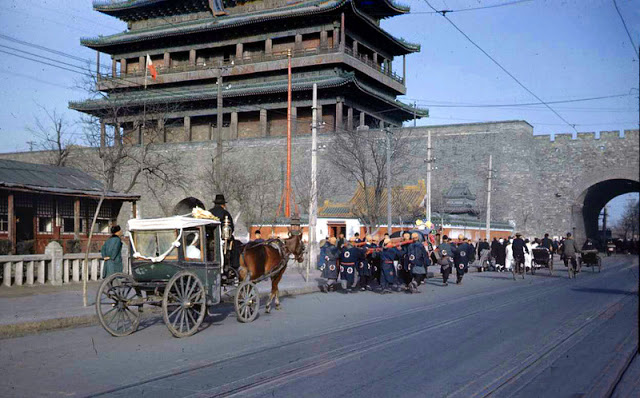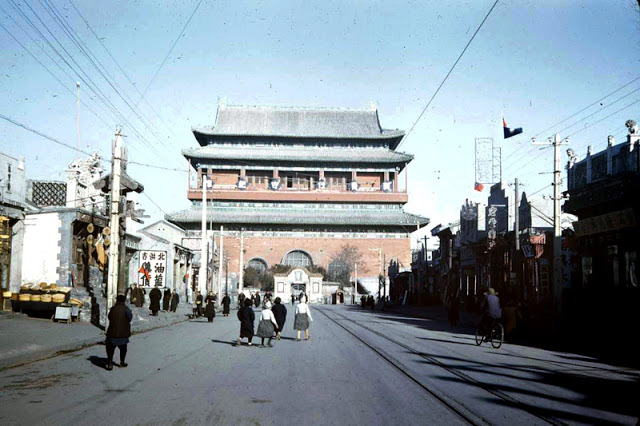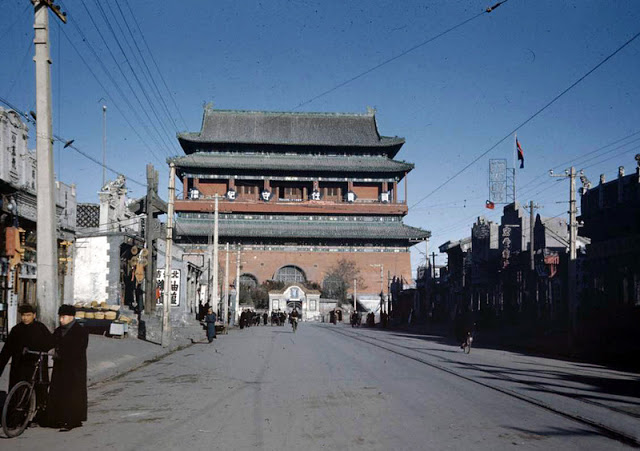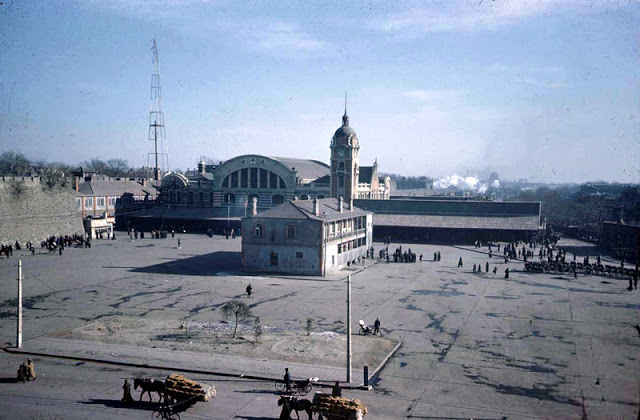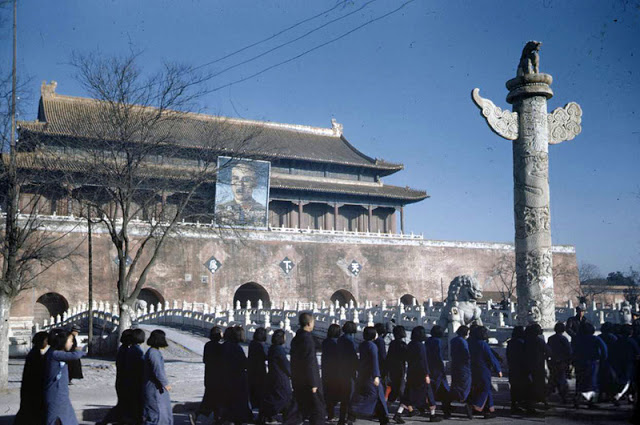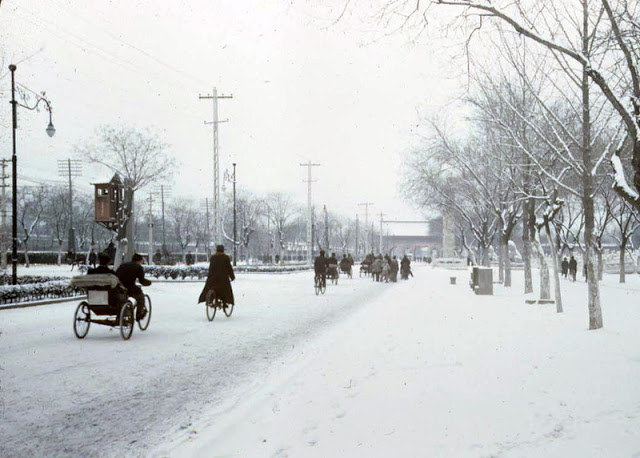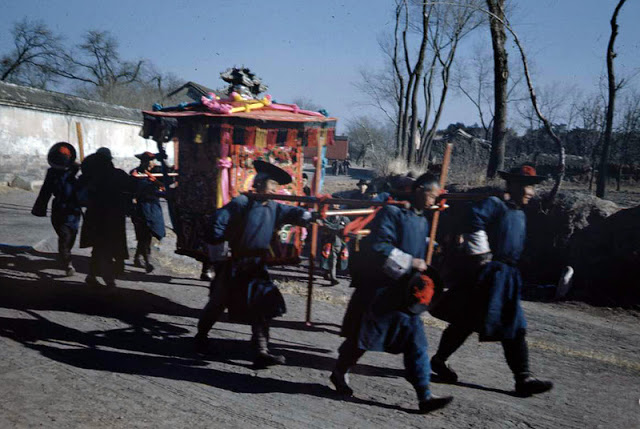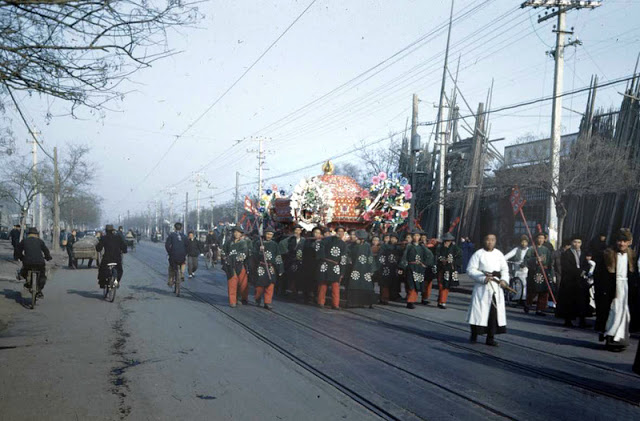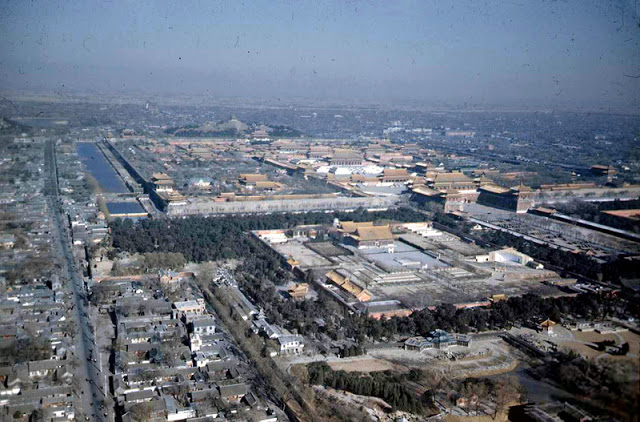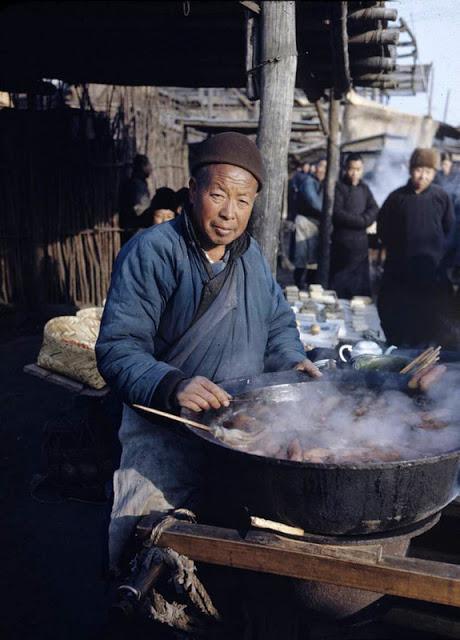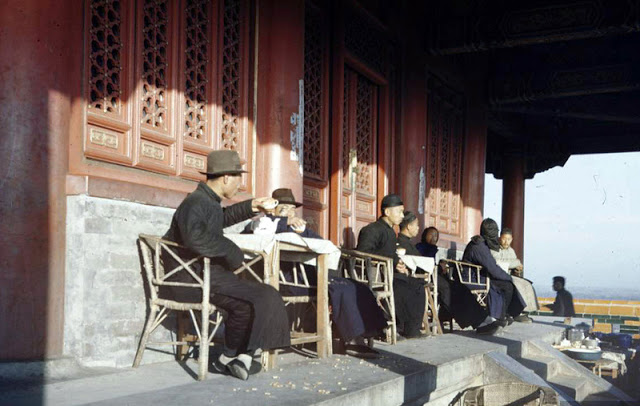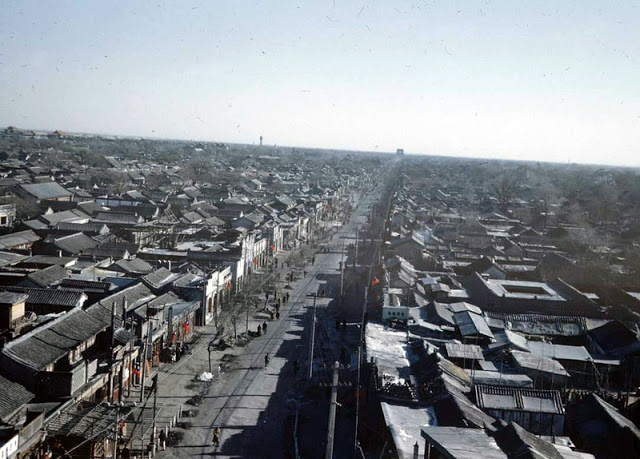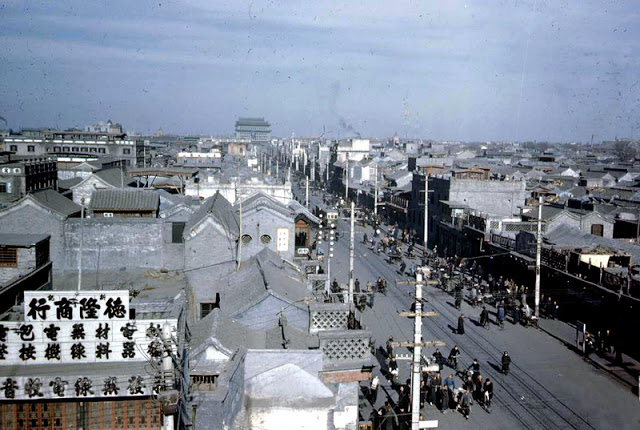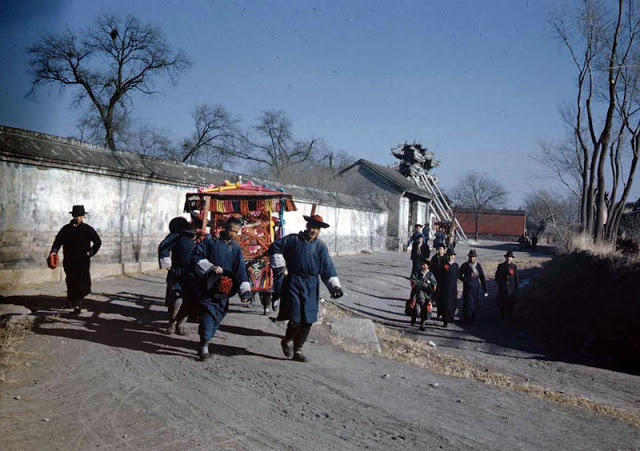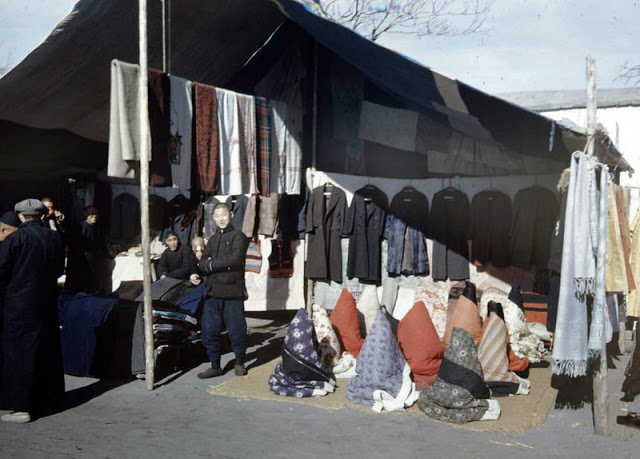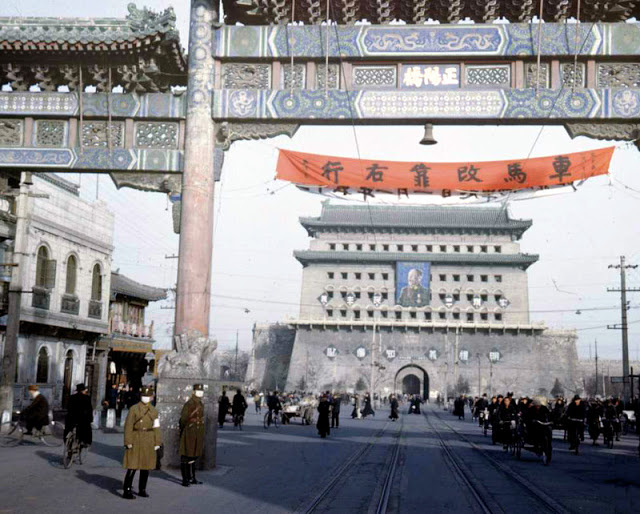Beijing is the second largest Chinese city by urban population after Shanghai and is the nation’s political, cultural and educational center. It is home to the headquarters of most of China’s largest state-owned companies, and is a major hub for the national highway, expressway, railway, and high-speed rail networks. The Beijing Capital International Airport is the second busiest in the world by passenger traffic.
The photos were taken by Ukranian photojournalist Dmitri Kessel in 1947 – 68 years ago.
In the time these photos were taken China was in midst of a Civil war. The Nationalists and Chinese Communists were allies during the Sino-Japanese War, but their domestic rivalry resumed after the defeat of Japan. To prevent the resumption of civil war, the U.S. government sent George C. Marshall to China to mediate.The Marshall Mission was headquartered in Beiping where a truce was brokered on January 10, 1946, and a three-person committee, consisting of a Nationalist, a Communist and an American representative, was created to investigate breaches in the ceasefire in North China and Manchuria.The truce began to unravel in June 1946 and the Marshall Mission ultimately failed to create a coalition government. The rape of Peking University student Shen Chong by two U.S. Marines in Dongdan on Christmas Eve 1946 sparked student demonstrations against the U.S. military presence in China. After Marshall’s departure in February 1947, full-scale civil war erupted.
Beiping was the headquarters of the Nationalists’ North China military operations led by Fu Zuoyi who commanded 550,000 troops. The city in 1948 had 1.5 million residents and another 4.1 million in the surrounding region. Among them were over 20,000 student airlifted out of Manchuria by Nationalist authorities to relieve pressure on food supplies in besieged cities and to prevent the youth from joining the Communist movement. Once in Beiping, the student refugees were given meager food rations but no means of reconstituting their schools. Once their rations ran out, the students marched on the city government in protest but were fired upon by the Nationalists’ Youth Army, which killed at least nine and wounded 48.The July 5th Massacre was widely condemned across the country. Then vice-president Li Zongren and Fu Zuoyi met with students and promising to hold the culprits accountable. Chiang Kai-shek agreed to pull the Youth Army out of Beiping, but over 250 student organizers were arrested in August.
On November 29, 1948, the Chinese Communists’ People’s Liberation Army (PLA), fresh off a decisive victory in Manchuria, launched the Pingjin Campaign. They captured Zhangjiakou to the northwest on December 24 and Tianjin to the southeast on January 15, 1949. With the defeat of the Nationalists in the Huaihai Campaignfurther south, Fu Zuoyi and over 200,000 Nationalist defenders were surrounded in Beiping. After weeks of intensive negotiations, Fu agreed on January 22, 1949, to pull his troops out of the city for “reorganization by the PLA.” His defection spared the city, its residents and its historical architecture from imminent destruction. On February 3, the PLA marched into Beiping.
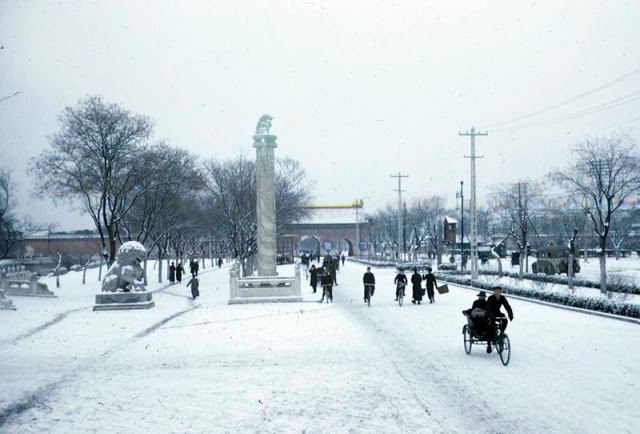
Photos were found on Guide China

